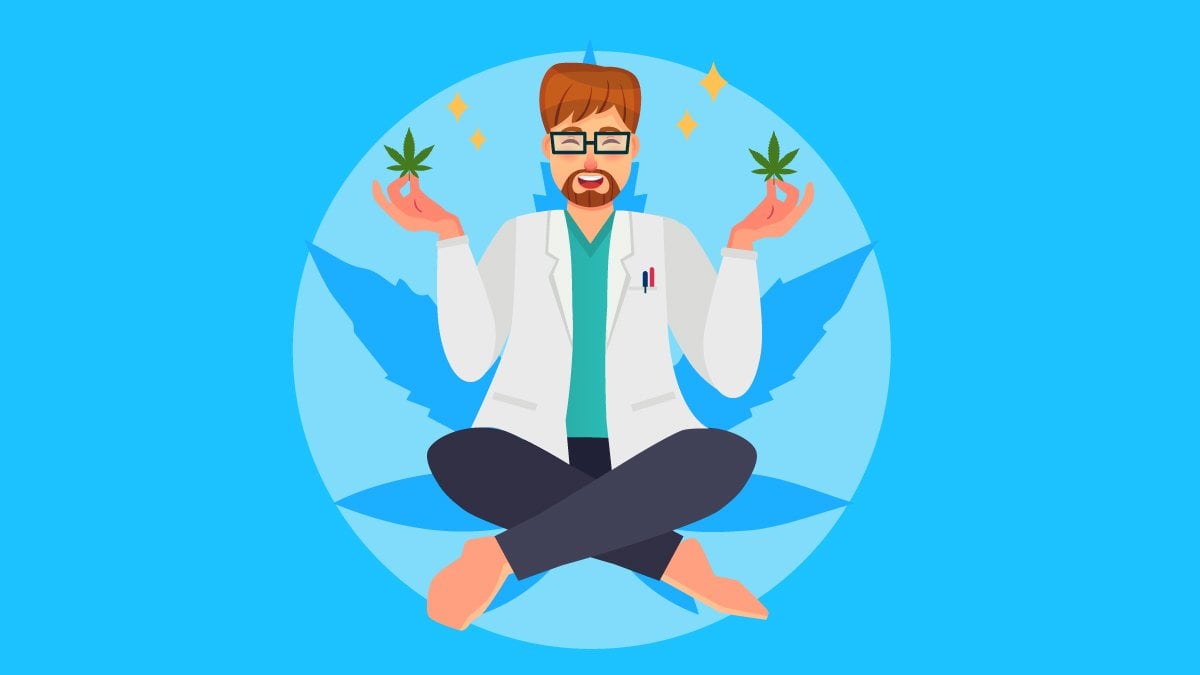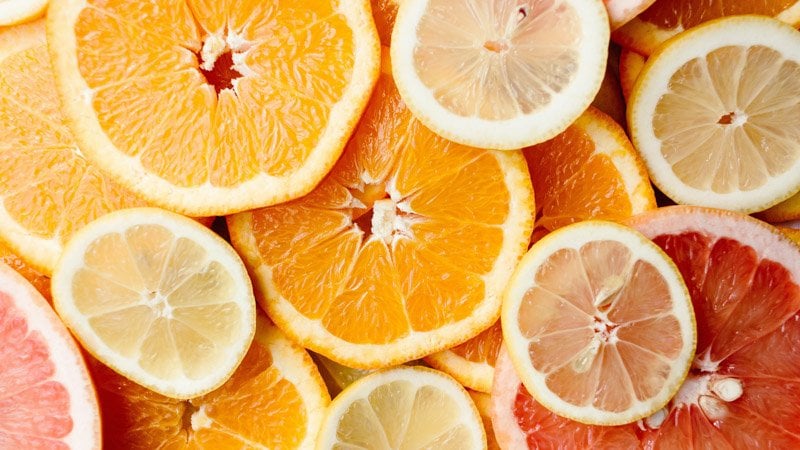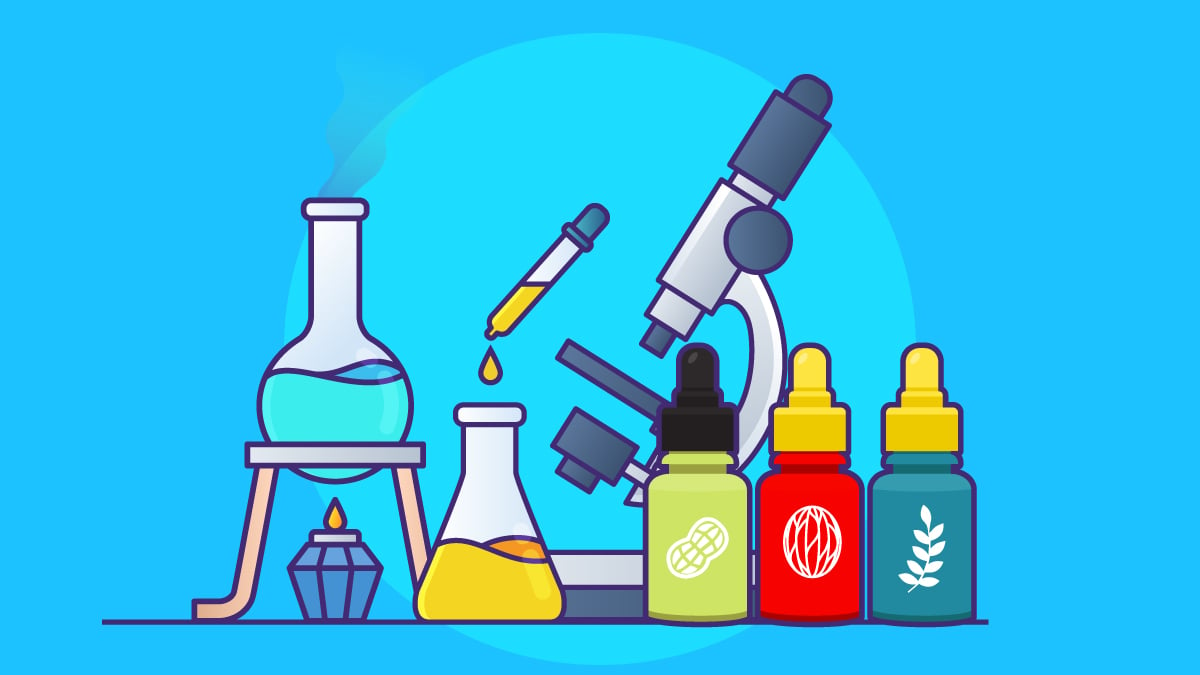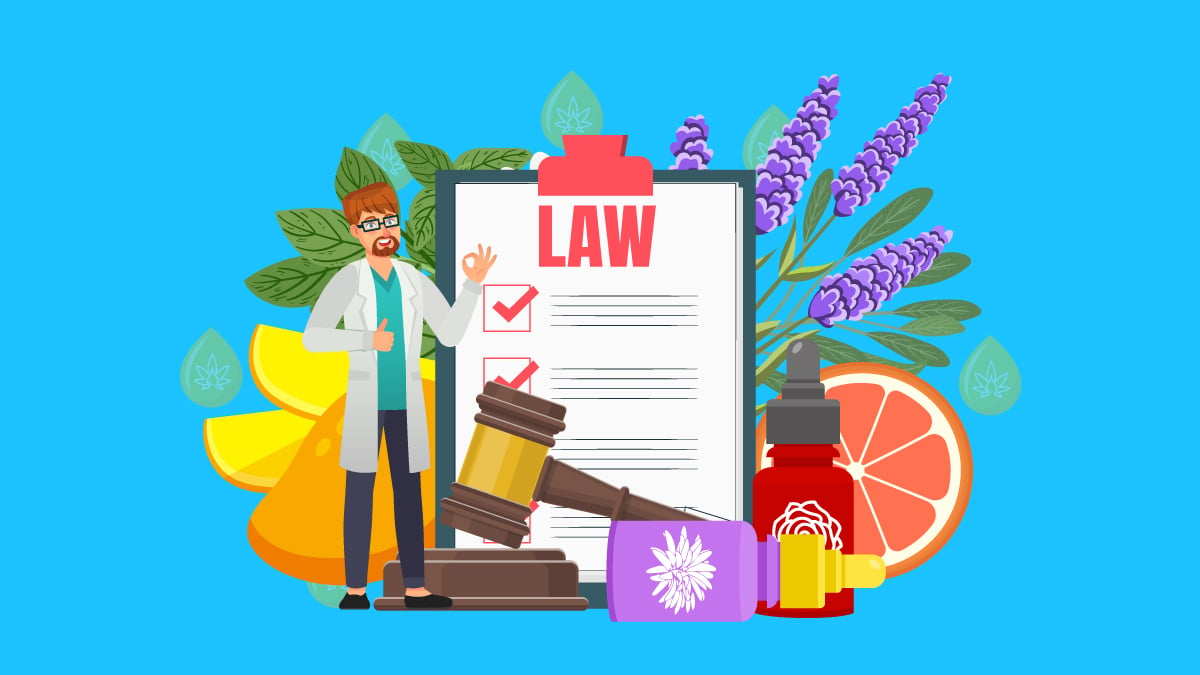Entourage Effect & Terpenes in Cannabis: How to Embrace The Whole-Plant Medicine

The “entourage effect” is the new buzzword in the medical marijuana world.
In order to understand this phenomenon, we need to take a look at the cannabis plant from the inside.
When you examine your favorite cannabis strain closely, you’ll notice an earthy-toned green plant with glistering sugar leaves and pungent buds.
We bet you can’t resist smelling them.
And if you take a look at them from the right angle, you may even see that the sugar leaves refract the light, which is one of the most beautiful views in the world if you ask us.
This is the cannabis plant.
The aforementioned sugar leaves and buds are usually coated with a rich layer of tiny crystals, officially referred to as trichomes. They are one manifestation on its surface level
But if you look a little deeper inside the trichomes, you will see the true nature of the plant shining brighter and brighter.
This coating on your marijuana buds is where over 80 cannabinoids and even more terpenes are contained.
What’s So Special About Cannabinoids And Terpenes?
These active compounds work synergistically to boost the therapeutic qualities of one another while mitigating their potential for unwanted side effects. Scientists call it “the entourage effect.”
There’s more to cannabis than the unending THC vs. CBD debate; in fact, there are literally hundreds of other compounds that affect the quality of marijuana and its final range of effects.
There’s a whole lot going on in the cannabis plant on a molecular level.
But what exactly is the “entourage effect?” What’s the relationship between THC and CBD? And finally, how do terpenes contribute to the entourage effect in cannabis?
Get your answers below.
What’s the Entourage Effect?
The term “entourage effect” is used by scientists and cannabis breeders to describe the way in which more than 80 cannabinoids and over 100 terpenes work together to induce the therapeutic magic cannabis is so widely praised for. We call this synergy.
The entourage effect can cause these various compounds to enhance the medical benefits of marijuana and minimize its psychoactivity, which could be overwhelming if a person consumed too much-isolated THC, for example.
When the separate compounds in cannabis are consumed alone, they’re nowhere near the effectiveness of the whole plant extract.
This synergy is greater than the sum of all the individual ingredients; that’s why it’s called the “entourage” effect. From the linguistic standpoint, entourage means a group of people surrounding and assisting one another.
That would make sense, right?
Now, let’s elaborate on one of the main examples of the entourage effect in practice: the relationship between THC and CBD.
Synergy Between THC and CBD
THC and CBD are typically called the yin and yang of cannabis and for a good reason.
THC, the psychoactive cannabinoid, is what makes us feel high; however, aside from being used recreationally, THC has plenty of medical applications. For example, many people like to treat anxiety with marijuana.
What many people are unaware of, however, is that THC produces different effects at different doses.
In smaller doses, it’s great for treating anxiety, but in larger doses, it can actually induce anxiety.
Some cannabis users even report paranoia if they get really blazed.
Have you ever felt like you’ve blasted off into space after using some particularly strong marijuana? Was your high not the most pleasant experience? It might’ve been due to a sudden influx of THC in large concentrations.
Cannabidiol (CBD), on the other hand, has no intoxicating qualities. Not only is it incapable of making you high or stoned, but it also counteracts the psychoactivity of THC.
Cannabis users on the verge of panicking after going overboard with THC are recommended to take cannabidiol in order to mitigate the potential anxiety.
On top of that, CBD can boost the anti-inflammatory and painkilling properties of THC, which was proven by a 2015 Israeli study on subjects with multiple sclerosis.
We will unfold the list of scientific studies on the entourage effect later on. For now, let’s shed some light on terpenes, the other important group of components in the cannabis plant.
Entourage Effect And Terpenes: More Than Just Flavor
The vast majority of people associate terpenes solely with the fragrance and flavor they produce in herbs.
However, over the last couple of years, terpenes have been mentioned much more frequently among cannabis consumers.
As you might have guessed, that’s because of their importance in triggering the entourage effect in the cannabis plant.
This section will help you understand the nature of terpenes and why they’re as important as the THC/CBD ratio in your marijuana buds.
What Are Terpenes?
By their scientific definition, terpenes are volatile aromatic molecules that evaporate easily and produce specific aromas. Think about plants like pine, mint, and chamomile. All have strong, characteristic odors to which they owe the terpene content.
If you’ve ever wondered why marijuana plants often share characteristic aromas with other plants, it’s because of terpenes. That’s why some weed strains smell like a lemon while others resemble a pungent aroma of fuel or nutmeg; the fragrance of each strain is determined by the predominant terpenes contained in the leaves.
So far, scientists have discovered around 200 terpenes in cannabis, but only a few of them appear in concentrations significant enough to be “noteworthy” or “noseworthy” for that matter.
We can categorize these odiferous substances in cannabis into three groups:
- Monoterpenes
- Diterpenes
- Sesquiterpenes
Whether a particular terpene belongs to one of these categories is determined by the number of repeating units of a 5 carbon molecule called isoprene, the structural indicator of all terpenoid substances.
10 Most Commonly Found Terpenes In Cannabis
Like we said, only a few terpene products appear in amounts substantial enough to be mentioned in this article.
Here are the 10 most commonly found terpenes in cannabis:
- Limonene
- Pinene
- Myrcene
- Linalool
- Delta-3-Carene
- Eucalyptol
- Beta-Caryophyllene
- Humulene
- Borneol
- Terpineol
Therapeutic Benefits of Terpenes
As mentioned, terpenes offer much more than just a fragrance.
In fact, they carry a wide range of therapeutic benefits, including:
- Stress relief
- Reduced inflammation
- Nausea relief
- Appetite control
- Pain management
- Sedation
- Cognitive boost
- Improved respiration
- Blood sugar modulation
- Anti-tumor properties
Needless to say, the above effects are attributed to particular terpenes, but they’re much more distinct when put together in a cannabis extract.
By the way…
How do Terpenes Contribute to the Entourage Effect?
It turns out that terpenes are healthy for people as well as cannabinoids.
According to a September 2011 report by Dr. Ethan Russo in the British Journal of Pharmacology, the wide-ranging therapeutic features of terpenes are what make full-spectrum CBD extracts more effective than CBD-only products.
For example, Beta-caryophyllene, a terpene found in oregano, black pepper, other edible herbs, green vegetables, and various cannabis strains, carries gastro-protective properties, which can be useful in fighting certain ulcers.
On top of that, the terpene holds great promise as a healing compound for inflammatory illnesses and autoimmune disorders thanks to its binding affinity with the peripheral cannabinoid receptor CB2.
In 2008, the Swiss researcher Jurg Gertsch described beta-caryophyllene as “a dietary terpenoid,” which is the only terpene known to directly activate the CB2 receptor. In his work, Gertsch attributes the above affinity to one of the reasons why green, leafy vegetables are so healthy to eat.
When it comes to the synergy between terpenes and cannabinoids, they both remarkably enhance cortical activity, kill respiratory pathogens, and increase blood flow.
Another report by Dr. Russo states that the entourage effect achieved by terpenoids and cannabinoids “could produce synergy with respect to the treatment of pain, inflammation, depression, anxiety, addiction, epilepsy, cancer, fungal, and bacterial infections.
Last but not least, terpenes can dampen THC-induced anxiety, just like CBD does. “Cannabinoid-terpenoid interactions amplify the beneficial effects of cannabis while mitigating THC-induced anxiety,” sums up Russo. That being said, next time you want to benefit from high levels of THC, make sure your strain has a rich terpene content too.
The Scientific Evidence of the Entourage Effect
We all know that nothing in the scientific world is ‘true’ until proven again and again through multiple trials. While there have been plenty of studies on this subject, we’ve put together a compilation of the few that have shown quality evidence supporting the “entourage effect.”
Besides, when you search the Web for information about the entourage effect, you’ll see a myriad of reports from individuals who have had experienced the benefits of full-spectrum extracts. They all seem to repeat the same thing: cannabis is more effective when used as the whole plant, rather than using isolated compounds such as pure CBD or THC alone.
More to the point, the first evidence confirming the existence of the entourage effect dates back to 1981, when one study expressed that the full-spectrum extracts from the cannabis plant produced 330% more activity when juxtaposed with isolated THC [1].
The researchers came up with the hypothesis that cannabis may have “inhibitory” and “synergistic” molecules.
However, the claims regarding the synergy between THC and CBD were mentioned earlier by another study back in 1976. The study tested 15 subjects who were administered large doses of THC and CBD together, and then, took THC on its own. Over 73% of them (11 subjects) reported that their high was much stronger when they consumed pure THC than when the two cannabinoids were administered together [2].
In order to get more “solid” evidence, we need to jump a few years further into 2012, when the results of studies on Sativex, a 1:1 THC/CBD oral spray, were first published.
The spray contains an extremely high dose of THC at around 48 mg, which is far beyond the limit for most individuals; people can experience toxic psychosis after consuming as much as 10 mg of THC.
Still, the research showed that only 4 out of 250 patients using Sativex experienced an episode of toxic psychosis [3].
This is where the “entourage effect” steps into the game.
As mentioned, Sativex contains an equal ratio of THC to CBD, and the presence of the latter could be responsible for mitigating the psychoactivity of Tetrahydrocannabinol. Given what we’ve said so far about cannabinoids, terpenes, and the entourage effect, this makes perfect sense.
Moreover, a 2013 survey on 953 individuals who were asked questions about their marijuana preferences found out that 98% of respondents were reported to prefer whole-plant marijuana extracts over isolate-based marijuana medications such as Marinol [4].
Ask a medical marijuana patient who has used both real weed and synthetic cannabinoids and they will likely tell you right away that the former is much better and has far fewer side effects.
Finally, a groundbreaking study from Israel– although conducted on mice– managed to overcome the bell-shaped dose-response of CBD by using full-spectrum CBD extracts. A bell-shaped dose-response typically limits the clinical use of drugs, which was also the case with Cannabidiol [5].
The study found that full-spectrum CBD increased responses upon higher doses, which stood in stark contrast to pure cannabidiol.
Why Is the Entourage Effect Beneficial For Me?
Given the growing body of scientific evidence, as well as the anecdotal accounts, the entourage effect appears to make cannabis medications more effective in certain treatments because it boosts the therapeutic effects of all active compounds in the cannabis plant.
On top of that, it mitigates any undesired side effects, such as the paranoid side of the marijuana high.
Numerous studies have found that whole marijuana flowers are less psychoactive than isolated THC. That’s great news for medical marijuana patients or people who were using drugs like Marinol and want to go all-natural.
When it comes to CBD, the entourage effect helps it overcome the bell-shaped dose-response;
In other words;
Less Cannabidiol is needed to exhibit its therapeutic potential, not to mention that, unlike most drugs, its efficacy doesn’t drop after reaching a certain dose.
A Final Word On the Entourage Effect
If you’ve never heard the term “entourage effect”, then we hope this article has helped you get a better understanding of this topic.
While we’re not entitled to make claims regarding the clinical effectiveness of the entourage effect, as we still need further research, it seems that the increasing popularity of whole-plant medicine paves the way to double-blind studies in the near future.
We won’t be surprised if the results turn out to be exactly what the cannabis community has been expecting for some time.
How about you?
Do you feel the difference between whole cannabis plants and isolated cannabinoids?
Let us know in the comments below.
References:
- Fairbairn J.W., Pickens J.T. Activity of Cannabis in Relations to Its Delta-Trans-Tetrahydrocannabinol Content (1981). British Journal of Pharmacology, 72, 401-409.
- Dalton WS, Martz R, Lemberger L, Rodda BE, Forney RB. Influence of cannabidiol on delta-9-tetrahydrocannabinol effects. Clin Pharmacol Ther. 1976 Mar;19(3):300-9. PubMed PMID: 770048.
- Oreja-Guevara C. Clinical efficacy and effectiveness of Sativex, a combined cannabinoid medicine, in multiple sclerosis-related spasticity. Expert Rev Neurother. 2012 Apr;12(4 Suppl):3-8. doi: 10.1586/ern.12.11. Review. PubMed PMID: 22509985.
- Arno Hazekamp Ph.D., Mark A. Ware M.D., Kirsten R. Muller-Vahl M.D., Donald Abrams M.D. & Franjo Grotenhermen M.D. (2013) The Medicinal Use of Cannabis and Cannabinoids—An International Cross-Sectional Survey on Administration Forms, Journal of Psychoactive Drugs, 45:3, 199-210
- Gallily, R., Yekhtin, Z., and Hanuš, L. (2015) Overcoming the Bell-Shaped Dose-Response of Cannabidiol by Using Cannabis Extract Enriched in Cannabidiol. Pharmacology & Pharmacy, 6, 75-85.




